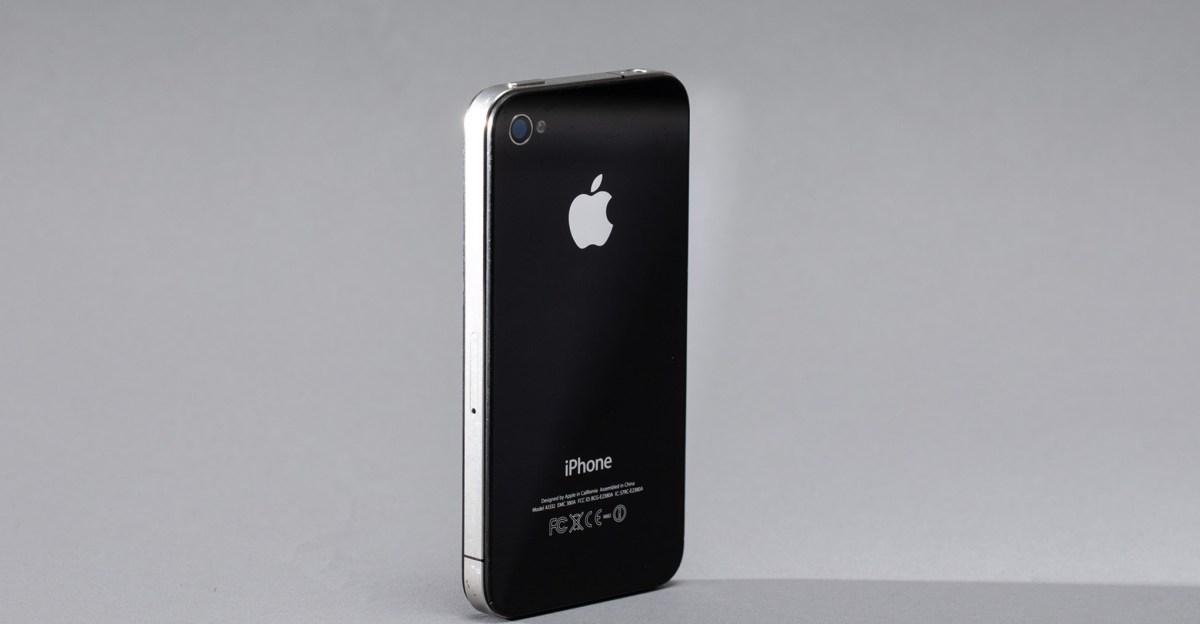Despite big changes to the migraine playbook, many sufferers aren’t getting adequate treatment.


Back when I was in medical training, I saw patients in a primary care clinic twice a week. Many mentioned they had headaches, and the first question I asked each of them, as I was trained to do, was “Are you a headache person?”
I always opened with that because while everybody gets a headache now and then, people who get recurrent headaches for years on end are, more often than not, having migraine attacks, which most people refer to as migraines. While migraines cause an astonishing amount of suffering and lost productivity globally — they’re the second-largest cause of disability worldwide — people who have them often suffer in silence.
Many people who get migraines never seek care for them, and even when they do seek care, people with frequent migraines often go undertreated: Only about 40 percent of Americans who’d benefit from migraine treatment actually receive it.
Migraine headaches have different causes than other types of headaches, and for that reason, they respond to different treatments. That’s often been a cause of despair for migraine sufferers who get little relief from over-the-counter medications and have found the side effects of prescription treatments too much to bear.
There’s new cause for hope, though. In the last few years, scientists have built on a growing body of knowledge about migraines’ causes to develop new strategies for preventing and treating them. For headache people, there’s a lot to be optimistic about.
Where migraines come from
Several characteristics make migraines different from other types of headaches, and one of the most obvious ones is severity, says Emily Schlitz Fortenberry, a neurologist who specializes in headaches at the University of Alabama at Birmingham. People with nonmigraine headaches are “not vomiting, having to go into a dark, quiet room and lie down,” she explains. “The disability is significantly different.”
People are likely to have migraines if they have had more than five lifetime episodes of headache attacks lasting anywhere from four hours to three days and characterized by any two of these four features: The headache is localized to one side of the head, it throbs or pulsates, it’s moderately to severely painful, or it’s worse with physical activity. These attacks also usually involve nausea and vomiting or sensitivity to light or sound.
There are multiple phases to a migraine headache. About four out of every five people with migraines have a preheadache phase that starts hours or even days before the pain starts, according to David Dodick, a neurologist and headache specialist who currently co-leads the health care nonprofit Atria Academy of Science and Medicine. This phase can involve a range of symptoms, including hypersensitivity to light or sound, neck pain, yawning, fatigue — and quirkier symptoms like the urge to urinate more frequently and cravings for certain foods. “All of those symptoms reflect an area in the brain that’s becoming active,” says Dodick.
In addition to these symptoms, about a third of people experience what’s called an aura before the actual headache starts, during which people may have neurological symptoms like seeing stars or blind spots, feeling numbness in their face or hand, or temporary paralysis. Next comes the headache itself, which is often severe and sometimes accompanied by nausea and vomiting or pain with exposure to light, sound, or smells. During the postheadache phase, people often experience mental slowing, low mood, fatigue, and difficulty concentrating. All together, these symptoms can last for hours to days, and a typical sufferer will go through the full cycle two to four times a month.
Women are much more likely than men to get migraines, likely due to fluctuations in estrogen levels, and younger adults are also more susceptible. The risk is also hereditary. “I always tell my patients, you can thank your family for this,” says Niushen Zhang, a neurologist and headache specialist at Stanford Medicine. People of low socioeconomic status and those who’ve had head trauma are more likely to get migraines, too.
Experts used to think migraines were solely caused by the abnormal expansion of blood vessels in the brain, according to Zhang. Over the past couple of decades, that thinking has evolved: Scientists now believe the brains of people with migraines are exquisitely sensitive to the effects of certain neurotransmitters, in particular calcitonin gene-related peptide, or CGRP.
“The CGRP molecule is essentially a pain molecule,” says Zhang. Headache researchers have found that people with migraines had higher blood CGRP levels during headaches than people without migraines, and that giving migraine-prone people infusions of the molecule triggered headaches. These discoveries made the molecule a target for a flurry of drug discovery, and since 2018, the FDA has approved eight new migraine drugs.
Migraine triggers are real, but be cautious about overidentifying them
Among the migraine prone, there’s some variety when it comes to which triggers kick off the cascade that leads to a headache. But one of the most common ones, across all genders and age groups, is stress.
“It’s actually relaxation after stress that is probably the most important trigger,” says Richard Lipton, a neurologist who leads the headache center at Montefiore Medical Center in the Bronx. He says “letdown” headaches on weekends or following particularly anxiety-producing events are a common event for migraine sufferers. This suggests changes in the stress hormone cortisol may play a role in the pathway that leads to migraine. It also explains why stress management techniques are so effective for prevention (more on that later).
Anticipatory anxiety, the worry about something bad to come, is one of the types of stress that can trigger migraines. That can make it challenging to disentangle actual migraine triggers from beliefs about triggers. Lipton remembers a patient who blamed his migraines on changes in barometric pressure, which his smartwatch pinged him about in real time. “I took away his watch, and his headaches got a lot better,” he says. “Beliefs about triggers cause anticipatory anxiety, which increases the probability of headache.”
Other common triggers include inadequate sleep, alcohol, overconsumption of or withdrawal from caffeine, and, paradoxically, overuse of some headache medicines, both over-the-counter and prescription: If used too often, some (but not all!) can lead to headaches.
When it comes to some suspected triggers, it can be complicated to tease out the difference between migraine cause and effect. “Let’s say somebody notices that when they eat chocolate, they have a high probability of subsequent headache,” says Lipton. “One possibility is that chocolate triggers the headache. Another possibility is that chocolate craving is a premonitory feature of migraine,” he explains — that is, that a craving is part of the preheadache phase of a migraine already in motion.
Lots of ink has been spilled trying to help migraine sufferers identify and avoid their dietary triggers, but Lipton’s not a fan of that approach. He’s seen too many people who come to his clinic “with 20 pounds of weight loss because they’re afraid to eat anything.” It’s helpful to identify real triggers, he says, “but if you get it wrong, you needlessly restrict their lives, exacerbate anticipatory anxiety, and make their headaches worse.”
Are you a headache person? Here’s where to start.
Consider some lifestyle changes
One of the most important things you can do if you think you have migraines is prioritize managing stress, says Lipton. Many approaches are proven to work, from mindfulness-based techniques to progressive muscle relaxation to biofeedback and beyond. One of Lipton’s psychologist colleagues maintains a website that links to a range of resources aimed at reducing stress as a migraine trigger.
Although you don’t want to be too restrictive when it comes to solving for other triggers, Lipton suggests people review a list of common ones when they do get headaches to see if any exposures stand out. He notes that migraine triggers are often cumulative: For example, many women can drink alcohol without getting a migraine at most times of the month, but a glass of wine at certain points during their menstrual cycle can lead to a headache. Lipton also recommends focusing on sleep hygiene, avoiding medication overuse, keeping caffeine intake moderate and consistent, and practicing some kind of physical activity.
Some research shows that certain supplements can also reduce headache, although the data supports some more than others. There’s good evidence that riboflavin, otherwise known as vitamin B2, prevents migraines in some people and has few side effects; magnesium may also be helpful, although it can cause unpleasant gastrointestinal symptoms at higher doses; and Coenzyme Q10 has shown promise in several studies.
Prioritize getting a diagnosis
An estimated 40 million Americans suffer from migraines, and there are only about 600 board-certified headache specialists in the country. That means most people with migraines need to get care from primary care providers.
In most cases, it’ll be up to the patient to get their headaches onto the provider’s agenda. “Go in to the doctor and say, ‘I’m here for my physical, but it’s also important to me to talk about my migraine’ or ‘my headaches,’” or schedule a visit specifically to talk about the issue, says Lipton.
A health care provider can help ensure you’re maximizing the lifestyle and behavioral changes likeliest to reduce your headache frequency, evaluate and treat you for important causes of headache, and connect you with the prescription medications and other interventions that can help avoid or stop migraines.
Telehealth platforms are increasingly including migraines among the conditions their clinicians treat, and some even prescribe newer medications when appropriate. If you’re having trouble getting in to see a provider in person about your headaches, it’s worth checking out telehealth options with your insurance company or your health care provider.
Access old and new tools for preventing and treating migraines
Drugs originally developed decades ago to treat epilepsy (like topiramate), high blood pressure (like propranolol), and depression (like amitriptyline) have been used to prevent migraines for years. Triptans are a group of drugs long prescribed to stop migraines once they’ve started. And injectable botulinum toxin — like Botox — isn’t just for your forehead furrows: It’s also approved for treating migraines.
All of these drugs can be prescribed by a primary care doctor (and yes, some primary care providers do Botox injections in their offices). While these options have helped many people manage their migraine symptoms, they can have nasty side effects — or, in the case of triptans, cause headaches to worsen if they’re used too often. For these reasons, some people discontinue using them and assume there are no better options.
But there are! In more recent years, as CGRP has been more clearly identified as an important part of the migraine cascade, a new group of migraine-specific drugs targeting this molecule has emerged, explains Dodick, who has been involved with trials of some of these newer medicines. These drugs come in a variety of forms: Some are long-acting monoclonal antibodies that are either injected or given intravenously every few weeks or months as a preventive therapy. Others, called gepants and ditans (brand names include Nurtec ODT, Ubrelvy, and Reyvow), are oral medicines mostly given to stop a migraine once it’s started, although Nurtec ODT can also be used preventively. There’s even one administered via nasal spray (Zavzpret).
These drugs have some significant advantages over the old-school drugs: They have few side effects, and they’re not associated with medication overuse headaches. Their one important disadvantage: Because they’re newer on the scene, insurance generally only covers them for people who’ve tried and failed two other migraine drugs, and they’re typically only prescribed by headache specialists.
It’s not only pharmaceuticals that are showing fresh promise in reducing migraine frequency and severity. Several devices have recently been approved by the Food and Drug Administration to treat migraines. These include nerve stimulators mounted on the arm, the crown of the head, or the forehead, or held in the hand. Although they sound fake, these have indeed been proven effective in studies, and none of them will make you look like Bane.
These devices are all safe unless you have a pacemaker, said Lipton, although they’re not cheap and are generally not covered by insurance.
India summons Bangladesh envoy over security concerns in Dhaka
- 17 hours ago
NDMA dispatches 27th aid consignment for Palestinians
- 16 hours ago
Pakistan Navy launches fourth Hangor Class submarine 'Ghazi' in China
- 13 hours ago
What is going on with Trevon Diggs and the Dallas Cowboys?
- 5 hours ago

The low, low cost of ending extreme poverty
- 4 hours ago

You need to listen to Sudan Archives’ violin opus for the club
- 6 hours ago
NFL playoff-clinching scenarios: Which teams can secure a berth in Week 16?
- 5 hours ago

Tremors felt in Balochistan's Barkhan district
- 17 hours ago

Everything is a mockumentary now, thanks to Rob Reiner
- 4 hours ago

Inside the high drama of the iPhone 4
- 6 hours ago

Met Office forecast rain, snowfall from Dec 20
- 14 hours ago

The global shadow economy behind Trump’s latest move on Venezuela
- 4 hours ago







